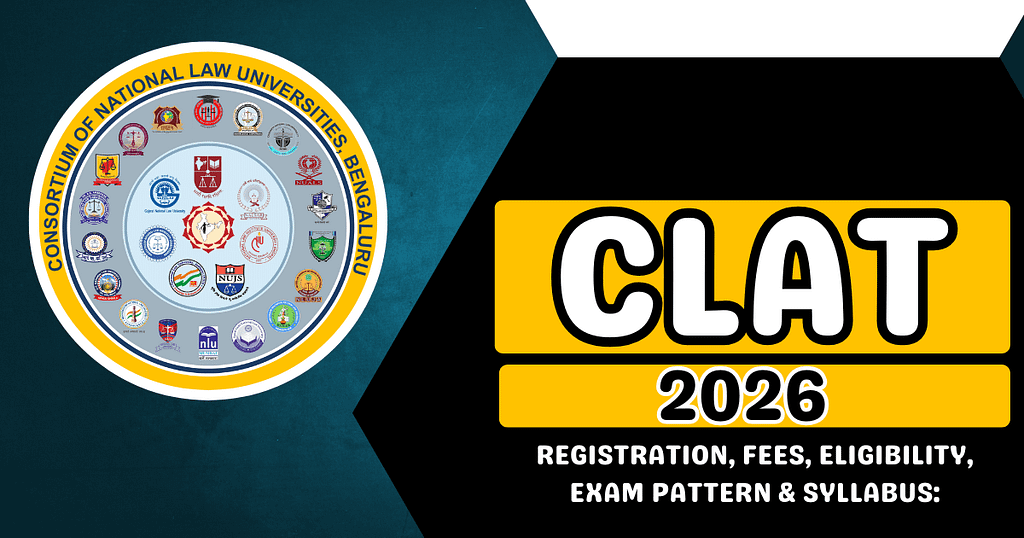
CLAT Exam 2026- Registration, Fees, Eligibility, Exam Pattern & Syllabus. Here are the details of CLAT 2026 Registration, fees, Eligibility, Exam Pattern, & Syllabus. This article covers every aspect of CLAT 2026. Learn in Detail about CLAT 2026 Exam & Other Important Information

Common Law Admission Test (CLAT) is an all-India entrance examination for admissions to undergraduate and postgraduate degree programs (LL. B & LL.M) conducted by National Law Universities.
This CLAT UG exam is conducted for admission to BA LLB, BBA LLB, BSc LLB, BCom LLB, BSW LLB, and CLAT PG for LLM courses. The conducting body for these exams is the Consortium of National Law Universities. CLAT is conducted once a year in an offline mode and in English.
Here, findmecollege has laid down below a detailed structure of CLAT, including its registration process, exam fees, eligibility, exam pattern as well as syllabus:
CLAT 2026 Exam Highlights
Every Year, CLAT takes an exam for students interested in growing their careers in the legal profession. CLAT is held once every Year. Look at the table below to get an overview of the CLAT 2026 Notification.
| CLAT 2026 Full Form | Common Law Admission Test |
| Conducting Body | Consortium of NLUs |
| Exam Frequency | Once a year |
| Exam Level | National Level |
| Mode of Application | Online |
| Application Fee (General) | 4000 Rs [Online] |
| Exam Mode | Offline |
| Participating Colleges | 25 |
| Exam Duration | 2 Hours |
| Number of Seats | 3700+ Seats (as of 2025) |
| CLAT Official Website | https://consortiumofnlus.ac.in/ |
CLAT 2026 Exam Date & Schedule
The CLAT Official Exam Date and Schedule have not yet been announced. It is expected the exam dates will be announced soon. Check out the table below for the critical CLAT 2026 dates and latest updates:
| CLAT 2026 Important Events | CLAT 2026 Events Date |
| Starting Date to Apply | TBA |
| Last Date to Apply | TBA |
| Last Date for Online Fee Payment | TBA |
| Admit Card Release Date | TBA |
| Admit Card Last Date to Download | TBA |
| CLAT 2026 Exam Date | TBA |
| Release Date of Provisional Answer Key | TBA |
| Final Answer Key Release Date | TBA |
| Result Date 2025 | December 7, 2024 |
| Registration for Counselling 2025 Starts | December 9, 2024 |
| Registration for Counselling 2025 Ends | December 11-20, 2024 |
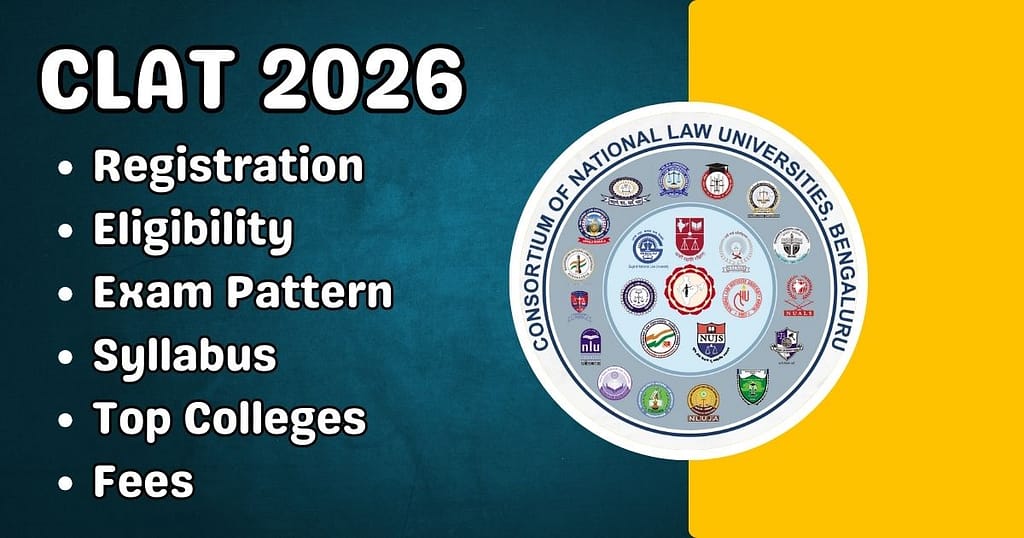
CLAT 2026: Registration Process & Fees
- For CLAT UG and PG, Online registration can be done by first registering themselves by clicking on the registration Tab available on the portal for the CLAT exam. After that, the application form is filled out, the required documents are submitted, and registration fees are paid.
- For the registration process, candidates must provide their personal information, educational qualification details, preference for national law universities, reservation details, etc.
- The CLAT application form can be found on the official CLAT website (consortiumofnlus.ac.in).
- The documents required for the registration process are the Class 10th and 12th Marksheet, Mobile no. and Email ID, Photograph, Signature, Category Certificate for SC/ST/OBC Candidates, Relevant Certificate for P.W.D Candidates, Relevant Certificate for BPL Candidates (photograph in the size of 4KB to 50KB in the JPG/JPEG format, signature in the size of 1KB to 30KB in the JPG/JPEG format, and other documents in PDF format).
- The application fee for GENERAL & OBC is Rs. 4000, and for SC, the fee for ST is Rs. 3500.
- A CLAT admit card is issued to the candidate who fills out and submits the application form on or before the prescribed last date for appearing in the Exam.
CLAT 2026 Registration Fees
The application fees vary for each category. Check out the table below for the registration fees per your category:
| Category | CLAT Exam Fees |
| General / OBC / PWD/ | Rs. 4000 |
| NRI / PIO / OCI candidates | Rs. 4000 |
| SC / ST / BPL candidates | Rs. 3500 |
CLAT 2026: Eligibility
Below the table, we mentioned the Eligibility Criteria for CLAT UG and CLAT PG programs.
CLAT UG 2026: Eligibility
| Aspect | Eligibility Criteria |
| Age Limit | No upper or lower age limit |
| CLAT Educational Qualification | Must have passed 10+2 or equivalent examination (12th appearing students can apply for CLAT 2026) |
| 12th Marks Criteria for CLAT | General/OBC/NRI/PIO/OCI: 45% or equivalent SC/ST/PWD: 40% or equivalent grade |
| Appearing Candidates | Candidates appearing for their qualifying examination in March/April 2026 are also eligible |
| CLAT 2026 Tie Breaker Rule | 1. Higher marks in the Legal Aptitude section 2. Higher age 3. Computerized draw of lots |
CLAT PG 2026: Eligibility
| Aspect | Eligibility Criteria |
| Age Limit | No upper age limit for candidates appearing for PG program through CLAT 2026 |
| CLAT Educational Qualification | Must have an LLB degree or equivalent examination |
| 12th Marks Criteria for CLAT | General/OBC/NRI/PIO/OCI: 50% or equivalent gradeSC/ST/PWD: 45% or equivalent grade |
| Appearing Candidates | Candidates appearing for their qualifying examination in March/April 2026 are also eligible |
| CLAT 2026 Tie Breaker Rule | – Higher age– Computerized draw of lots |
- There is no upper age limit for CLAT UG and PG.
- A candidate who has completed 10+2 with the required score from a recognized institution is eligible to sit for the CLAT UG exam.
- A minimum of 45% marks are requisite for General, OBC, and SAP categories in the qualifying Exam, and a Minimum of 40% marks are requisite for SC and ST categories.
- Those who want to appear in CLAT PG should have completed graduation in LLB (3-year LLB or 5-year LLB) from a university recognized by BCI.
- A minimum of 40% marks are requisite for the General, OBC, and SAP categories in the qualifying examination, and a minimum of 35% marks are requisite for the SC and ST categories.
Note: Candidates appearing in the qualifying examination and the LLB Final year examination are also eligible for CLAT UG and CLAT PG, respectively. Such candidates will be given admission if they submit the qualification certificates and documents at the time of seat allotment.
Candidates appearing in the qualifying Exam and CLAT in the same Year must ensure that they score the minimum required marks in the qualifying Exam. If a candidate cracks the CLAT but fails to secure the minimum marks in the qualifying Exam, he/she will be disqualified from the admission process.
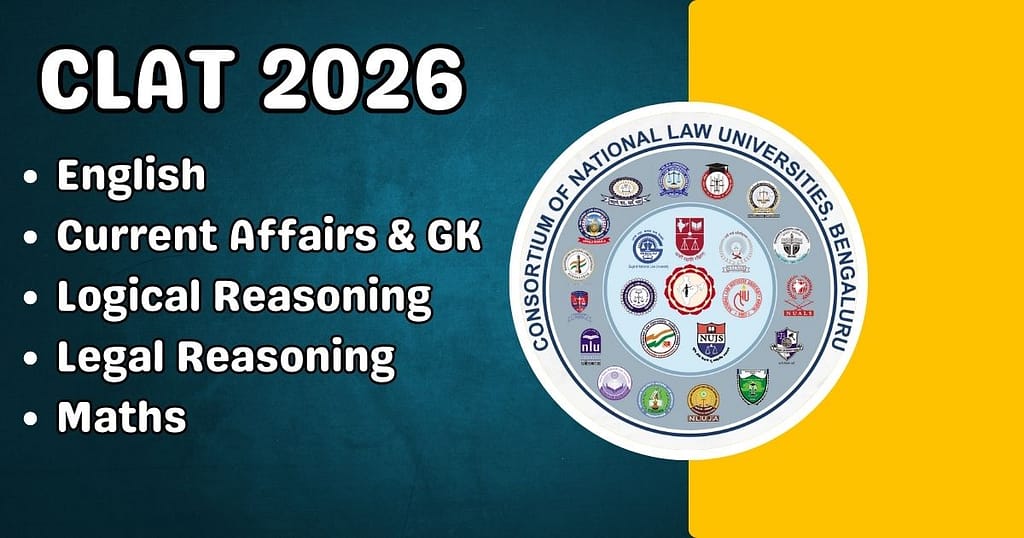
CLAT 2026: Exam Pattern
CLAT 2026 UG: Exam Pattern
Candidates preparing for CLAT UG 2026 must have a good knowledge of the Exam Pattern. In the table below, we have given all the required details for the Exam Pattern.
| Attribute | Details |
| Exam Mode | Offline |
| Exam Centers | Designated national exam centres |
| Exam Duration | 2 hours |
| Question Type | Multiple-choice questions (comprehension-based) |
| Total Questions | 120 |
| Sections | 5 sections |
| 1. English Language | 28-32 questions (comprehension passages, grammar, vocabulary) |
| 2. General Knowledge & Current Affairs | 35-39 questions (current events, general knowledge) |
| 3. Quantitative Techniques | 13-17 questions (basic mathematical skills) |
| 4. Legal Aptitude | 35-39 questions (legal propositions, law-related facts) |
| 5. Logical Reasoning | 28-32 questions (analyzing and solving problems logically) |
CLAT 2026: Exam Pattern
In the table below, we have mentioned the different sections of CLAT 2026, along with questions and weightage.
| SECTIONS | QUESTIONS | WEIGHTAGE |
| English | 22-26 | 20% |
| Current Affairs & GK | 28-32 | 25% |
| Logical Reasoning | 22-26 | 20% |
| Legal Reasoning | 28-32 | 25% |
| Maths (Quantitative Techniques) | 10-14 | 10% |
| Total | 120 | 100% |
CLAT 2026 UG: Exam Pattern
- The paper comes in the English language.
- For 2 hours duration.
- In offline mode.
- Questions come in MCQs format from the given passages.
- It consists of 150 MCQs for 150 marks.
- The subjects and weightage it consists of are English Language (28-32 que. and 20% weightage), Current Affairs including General Knowledge (35-39 que. and 25% weightage), Legal Reasoning (35-39 que and 25% weightage), Logical Reasoning (28-32 que and 20% weightage), and Quantitative Techniques (13-17 que and 10% weightage).
- Each question contains 1 mark, and 0.25 marks are to be deducted for every wrong answer.
CLAT 2026 PG: Exam Pattern
Candidates preparing for CLAT PG 2026 must review the exam pattern. In the table below, we have discussed every detail of the CLAT PG 2026 Exam Pattern. Please go through it.
| Mode of Exam | Offline |
| Medium of Question Paper | English (only) |
| Type of Exam | Objective |
| Duration | 2 hours |
| Type of Questions | Objective Type |
| Number of Multiple Choice Questions | 120 |
| Marks Obtained for Correct Answer | +1 |
| Marks Deducted for Incorrect Answer | -0.25 |
| Topics Asked in MCQ | Constitutional Law, Administrative Law, Criminal Law, Family Law, Property Law, Company Law, Labour Law, Environmental Law, etc. |
CLAT 2026 PG: Exam Pattern
- The paper comes in the English language.
- For 2 hours duration.
- In offline mode.
- Consists of 120 MCQs for 120 marks.
- The subjects and weightage are Constitutional Law (40 que. for 40 marks), Contract, Torts, Criminal Law, International Law, IPR, and Jurisprudence (60 que. for 60 marks), Law topics, and Contemporary Issues (20 que. for 20 marks).
- Each question contains 1 mark, and 0.25 marks are to be deducted for every wrong answer.
Each section of the CLAT UG question will include multiple passages of 300-400 words each, followed by a set of multiple-choice questions. CLAT PG only includes MCQs; the essay or descriptive section has been removed from it.
CLAT 2026: UG & PG Syllabus
CLAT exam is held for both UG and PG programs, which have different syllabuses and exam patterns. UG programs are held for courses like BA LLB, BCOM LLB, and BBA LLB, while PG programs are held for courses like LLM and various other specializations like Corporate law and intellectual property law.
CLAT 2026: UG Syllabus
Check out the table below to learn the detailed syllabus of CLAT UG:
| Subjects | Syllabus |
| English Language | 450 words passage based on contemporary or historically significant fiction and non-fiction writing |
| 5-6 questions testing comprehension and language skills | |
| Read and comprehend the main points, arguments, and viewpoints in the passage | |
| Draw inferences and conclusions, summarize, compare and contrast arguments or viewpoints | |
| Understand the meaning of words and phrases used in the passage | |
| Current Affairs & GK | 450 words passage based on news, journalistic sources, current affairs, and general knowledge, covering: |
| Contemporary events of significance from India and the world | |
| Arts and Culture | |
| International affairs | |
| Historical events of continuing significance | |
| Legal Reasoning | 450 words passage involving legal matters, public policy questions, or moral philosophical enquiry |
| Identify and infer rules and principles in the passage | |
| Apply rules and principles to various fact situations | |
| Understand how changes to laws or principles may alter their application to different fact situations | |
| Logical Reasoning | Series of short passages (about 300 words each) |
| Recognize arguments, premises, and conclusions | |
| Read and identify arguments in the passage | |
| Critically analyze patterns of reasoning and assess the effectiveness of arguments | |
| Infer from the passage, apply inferences to new situations, draw relationships, and identify contradictions or equivalences. | |
| Quantitative Techniques | Short sets of facts or propositions, graphs, or other textual, pictorial, or diagrammatic representations |
| Derive, infer, and manipulate numerical information from passages, graphs, or other representations. | |
| Apply 10th-standard mathematical operations, such as ratios and proportions, introductory algebra, measurement, and statistical estimation. |
CLAT 2026: UG Syllabus
- English language– A passage of about 450 words each, is provided, followed by a series of questions, that require the comprehension and language skills of the candidates to read and summarise the passage and lastly answer the questions based on it.
- Current affairs, including General Knowledge—This 450-word passage is derived from news and other sources and requires awareness of current affairs, art and culture, and other international matters.
- Legal reasoning– A 450-word fact-based passage tests candidates’ general awareness of legal and moral issues.
- Logical Reasoning– A 300-word short passage requires the candidates to critically analyze the reasoning and draw conclusions to answer the questions.
- Quantitative Techniques– Include short sets of facts or propositions, graphs, or other textual, pictorial, or diagrammatic representations of numerical information, followed by questions requiring the candidates to draw conclusions on such diagrams and passages.
CLAT 2026: UG Syllabus
Have a look at the table below to learn the most important topics from CLAT PG Syllabus:
| Constitutional Law | Jurisprudence |
| Torts | Family Law |
| Company Law | Public International Law |
| Labour Law | Industrial Law |
CLAT 2026: PG Syllabus
- Questions shall be provided as extracts from primary legal materials, such as court decisions in various fields of law, statutes, or regulations.
- These questions shall demand candidates to demonstrate the following –
- Ability to read and comprehend the issues.
- Awareness of the issues discussed in the passage.
- Summarise the passage, and
- Ability to apply your knowledge of the fields of law.
It is extremely important for candidates appearing in CLAT to understand the exam pattern. This article provides all the important information related to the test modalities, such as mode, duration, making scheme, number of questions, and others. It also provides information about the type of questions asked in the examination and the skills that are tested. Candidates should be particularly mindful of the type of questions asked in CLAT.
CLAT 2026: Exam Centers List
The previous year, the Exam was conducted at 139 test centers in 25 states and four union territories across India. The table below shows the state-wise list of CLAT Exam Centers.
The CLAT 2026 exam centres list PDF will be available on the official Consortium website.
| Exam Centre States | Exam Centre Cities |
| Andhra Pradesh | Anantapur, Chirala, Eluru, Guntur, Kadapa, Kakinada, Kurnool, Nellore, Ongole, Rajahmundary, Srikakulam, Tekkali, Tirupathi, Vijayawada, Visakhapatnam, Vizianagaram |
| Arunachal Pradesh | Itanagar / Naharlagun |
| Assam | Guwahati, Dibrugarh, Jorhat, Silchar, Tezpur |
| Bihar | Muzaffarpur, Patna, Arrah, Bhagalpur, Darbhanga, Purnea |
| Chhattisgarh | Bilaspur, Raipur, Chandigarh, Bhilai Nagar, Durg |
| Delhi | New Delhi |
| Goa | Panaji / Madgoan |
| Gujrat | Ahmedabad, Gandhinagar, Anand, Bhavnagar, Himatnagar, Jamnagar, Mehsana, Rajkot, Surat, Vadodara |
| Haryana | Faridabad, Gurugram, Ambala, Hisar, Karnal, Kurukshetra, Panipat, Rohtak, Sonipat, Yamuna Nagar |
| Himachal Pradesh | Bilaspur, Hamirpur, Kangra, Kullu, Mandi, Shimla, Una |
| J&K | Jammu, Srinagar, Samba |
| Jharkhand | Jamshedpur, Ranchi, Bokaro Steel City, Dhanbad, Hazaribagh, |
| Karnataka | Ballari(Bellary), Belagavi(Belgaum), Bengaluru, Bidar, Davanagere, Dharwad / Hubli, Kalaburagi (Gulbarga), Hassan, Mangaluru(Mangalore), Mysuru(Mysore), Shivamogga(Shimoga), Tumakuru(Tumkur), Udupi, Vijayapura(Bijapur) |
| Kerala | Alapuzzha, ErnakulamIdukki, Kannur, Kasaragod, Kollam, Kottayam, Kozhikode, Malappuram, Palakkad, Thiruvananthapuram, Thrissur |
| Madhya Pradesh | Bhopal, Indore, Gwalior, Jabalpur, Sagar, Satna, Ujjain |
| Maharashtra | Akola, Amravati, Aurangabad (Maharashtra), Chandrapur, Dhule, Jalgaon, Kolhapur, Latur, Mumbai/Navi Mumbai, Nagpur, Nanded, Nashik, Pune, Raigad, Ratnagiri, Sangli, Satara, Solapur, Thane, Wardha |
| Manipur | Imphal |
| Meghalaya | Shillong |
| Mizoram | Aizwal |
| Nagaland | Kohima |
| Odisha | Balasore, Berhampur-ganjam, Bhubaneswar, Cuttack , Dhenkanal , Rourkela , Sambalpur |
| Punjab | Amritsar, Bhatinda, Jalandhar, Ludhiana, Mohali, Patiala, Sangrur |
| Rajasthan | Alwar, Bikaner, Jaipur, Jodhpur, Kota, Sikar, Sriganganagar, Udaipur |
| Sikkim | Gangtok |
| Tamil Nadu | Coimbatore, Madurai, Salem, Erode, Thanjavur, Nagercoil, Tirunelveli, Tiruchirappalli, Vellore, Namakkal |
| Telangana | Khammam, Karimnagar, Warangal, Nizamabad, Mahabubnagar |
| Tripura | Agartala |
| Uttar Pradesh | Greater Noida, Meerut, Noida, Agra, Aligarh, Bareilly, Gorakhpur, Jhansi, Kanpur, Lucknow, Mathura, Moradabad, Muzaffarnagar, Prayagraj, Varanasi, Allahabad, Ghaziabad |
| Uttarakhand | Dehradun, Haldwani, Haridwar, Roorkee |
| West Bengal | Asansol, Burdwan(Bardhaman), Siliguri, Hooghly, Barasat, Howrah, Barrackpore, Kalyani, Kolkata |
CLAT 2026 Preparation Books
Candidates you are preparing for CLAT 2026 must check out some of the books we have mentioned in the table below. These are some of the top rated books for students you want to succeed in the CLAT 2026 exam.
| Author | Book Name |
|---|---|
| A. P. Bhardwaj | “Study Package for CLAT“ |
| Arihant Experts | “Self-Study Guide CLAT“ |
| Universal’s | “Guide to CLAT & LLB“ |
| Singh, R. K. and Singh, S. | “CLAT/ AILET 2026 (Guide)” |
| R.S. Aggarwal | “A Modern Approach to Verbal & Non-Verbal Reasoning“ |
| Abhinav Misra | “Word Power Made Easy – The Complete Handbook for Building a Superior Vocabulary“ |
| M Laxmikanth | “Indian Polity“ |
| Manorama Year Book | “Manorama Yearbook 2025“ |
| Pearson Education | “Legal Awareness and Legal Reasoning for CLAT and LL.B. Entrance Examinations“ |
CLAT 2026: Seats (LLB and LLM Courses)
Refer to the table below for the college-wise seat distribution for both LLB and LLM courses:
CLAT Placement- NLUs Placement
CLAT UG Placement Statistics
Check out the table below to learn about the CLAT PG Placements for the year 2022:
| Name of NLU | No. of students graduating | No. of students placed | Median Placement Package(Rs.) |
| National Law School of India University (NLSIU ), Bangalore | 76 | 65 | 16,00,000 (Sixteen Lakh Only) |
| National Law University (NLU), Delhi | 85 | 59 | 19,00,000 (Nineteen Lakhs Only) |
| NALSAR University of Law, Hyderabad | 118 | 96 | 16,00,000 (Sixteen Lakh Only) |
| West Bengal National University of Juridical Sciences (WBNUJS), Kolkata | 127 | 80 | 16,00,000 (Sixteen Lakh Only) |
Law Entrance Exams in India
Instagram- Follow Us
Frequently Asked Questions
-
Question: Will CLAT be held twice a year in 2026?
Answer: No CLAT exam is always held once in a year.
-
Question: Can a candidate give CLAT exam 2026 online?
Answer: CLAT exam 2026 will be on pen and paper mode(offline mode).
-
Question: CLAT exam is conducted in which language?
Answer: CLAT exam has always been conducted in English Language. CLAT 2026 will be conducted in English language.
-
Question: Is CLAT 2026 Application form available in offline mode?
Answer: CLAT Exam 2026 application form will be available online only. Candidates shall fill the form online.
-
Question: Can a candidate of any stream can apply for CLAT 2026 exam?
Answer: Candidates appearing for CLAT UG program can apply with any stream. However candidates appearing for CLAT PG program should have LLB degree. And candidates should also check other eligibility criteria.
-
Question: What is CLAT exam
Answer: CLAT exam stands for Common Law Admission Test. It is a national level exam conducted by Consortium of Law Universities for admission into 5 year integrated LLB program and 1 year LLM program. The CLAT score is accepted by 27 NLUs across India as well as many other law universities.
-
Question: What is CLAT
Answer: CLAT exam stands for Common Law Admission Test. It is a national level exam conducted by Consortium of Law Universities for admission into 5 year integrated LLB program and 1 year LLM program. The CLAT score is accepted by 27 NLUs across India as well as many other law universities.
-
Question: How many students appeared for CLAT 2025
Answer: The total numbers of students appeared for CLAT 2025 (UG & PG combined) are 75,000 approx. The total number of student registered for CLAT UG- 60295 and CLAT PG- 10948 in which the total number of students appeared for CLAT UG- 58504 and CLAT PG- 68786
-
Question: Is CLAT exam tough
Answer: Yes CLAT (Common Law Admission Test) is one of the toughest exam pan India. It is one of the highly competitive exam with diverse syllabus comprising of logical reasoning, Legal knowledge and Currents affairs and every year number of students appearing for CLAT exam is also increasing.
-
Question: How to fill CLAT form
Answer:
-
Question: How to prepare for CLAT
Answer:
-
Question: How many seats are there in CLAT
Answer:
-
Question: How to prepare for CLAT exam
Answer:
-
Question: What is CLAT exam eligibility
Answer:
-
Question: How many attempts for CLAT
Answer:
-
Question: How many people give CLAT
Answer:
-
Question: What is the full form of CLAT
Answer:
-
Question: Who can give CLAT exam
Answer:
-
Question: How many students appear for CLAT
Answer:
-
Question: How to prepare for CLAT after 12th
Answer:
-
Question: What is CLAT exam for
Answer:
-
Question: Can I give CLAT exam after 12th
Answer:
-
Question: Does symbiosis accept CLAT score
Answer:
-
Question: Is CLAT compulsory for LLB
Answer:
-
Question: Is CLAT easy
Answer:
-
Question: Is CLAT tough
Answer:
-
Question: Is there negative marking in CLAT
Answer:
-
Question: What is the syllabus of CLAT
Answer:
-
Question: Can i give CLAT after graduation
Answer:
-
Question: Does CLAT have negative marking
Answer:
-
Question: How many marks of CLAT exam
Answer:
-
Question: How many students appear for CLAT every year
Answer:
-
Question: How to clear CLAT exam
Answer:
-
Question: How to crack CLAT
Answer:
-
Question: Is CLAT difficult
Answer:
-
Question: What is CLAT for
Answer:
-
Question: What is CLAT PG
Answer:
-
Question: How many seats in CLAT
Answer:
-
Question: How many students are invited for CLAT counselling
Answer:
-
Question: How many students give CLAT exam
Answer:
-
Question: How much marks required to clear CLAT exam
Answer:
-
Question: How much time is required to prepare for CLAT
Answer:
-
Question: How to apply for CLAT exam
Answer:
-
Question: How to prepare for CLAT PG
Answer:
-
Question: How to start preparing for CLAT
Answer:
-
Question: Is AILET tougher than CLAT
Answer:
-
Question: Is CLAT hard
Answer:
-
Question: Is CLAT tougher than JEE
Answer:
-
Question: What is CLAT examination
Answer:
-
Question: When is CLAT exam
Answer:
-
Question: Who is eligible for CLAT exam
Answer:
-
Question: Can I give CLAT in class 12
Answer:
-
Question: How many seat in CLAT
Answer:
-
Question: How to apply for CLAT
Answer:
-
Question: How to crack CLAT exam
Answer:
-
Question: How to give CLAT exam
Answer:
-
Question: How to prepare for CLAT without coaching
Answer:
-
Question: Is CLAT necessary for LLB
Answer:
-
Question: Is CLAT online or offline
Answer:
-
Question: What is CLAT course
Answer:
-
Question: What is CLAT exam in India
Answer:
-
Question: What is the CLAT exam
Answer:
-
Question: When CLAT result will be declared
Answer:
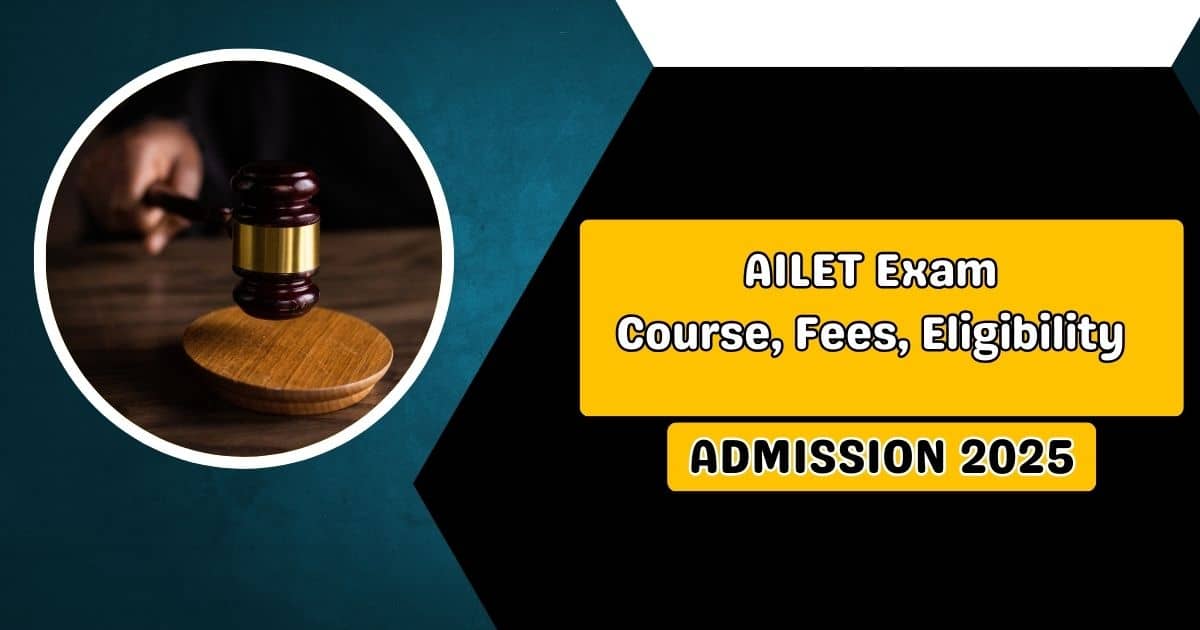

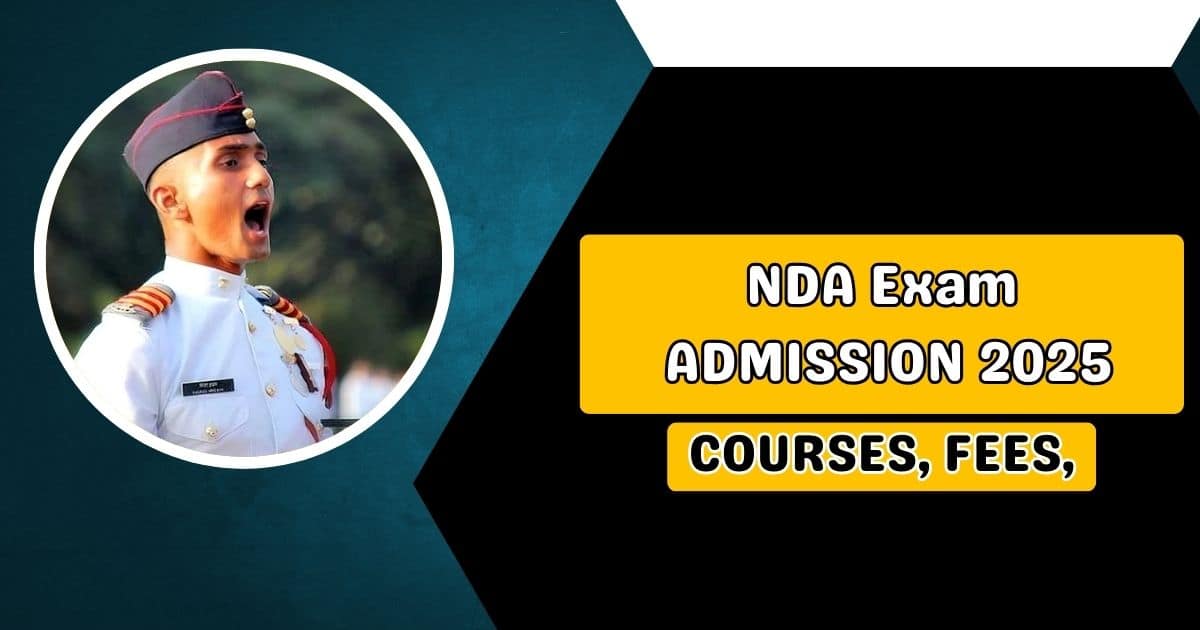
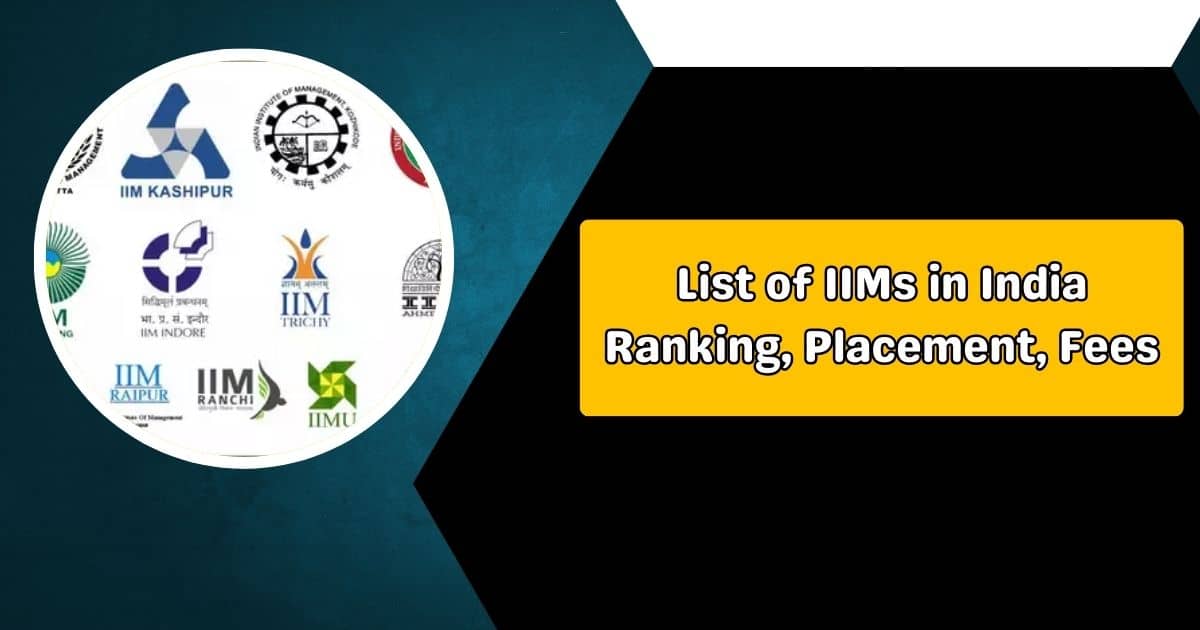
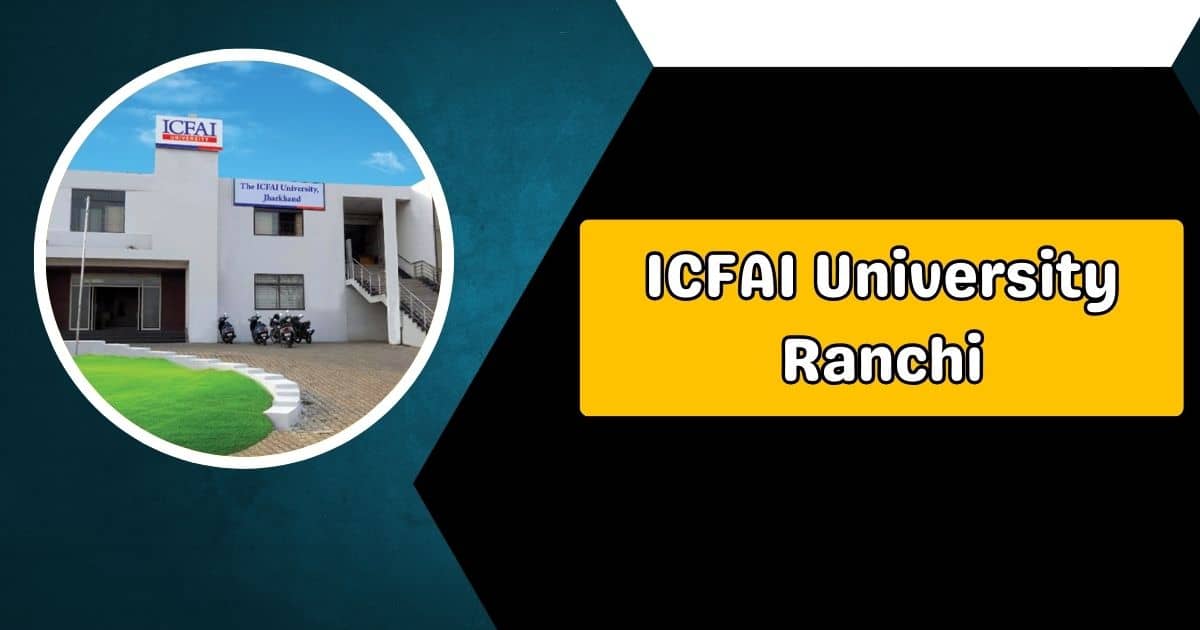
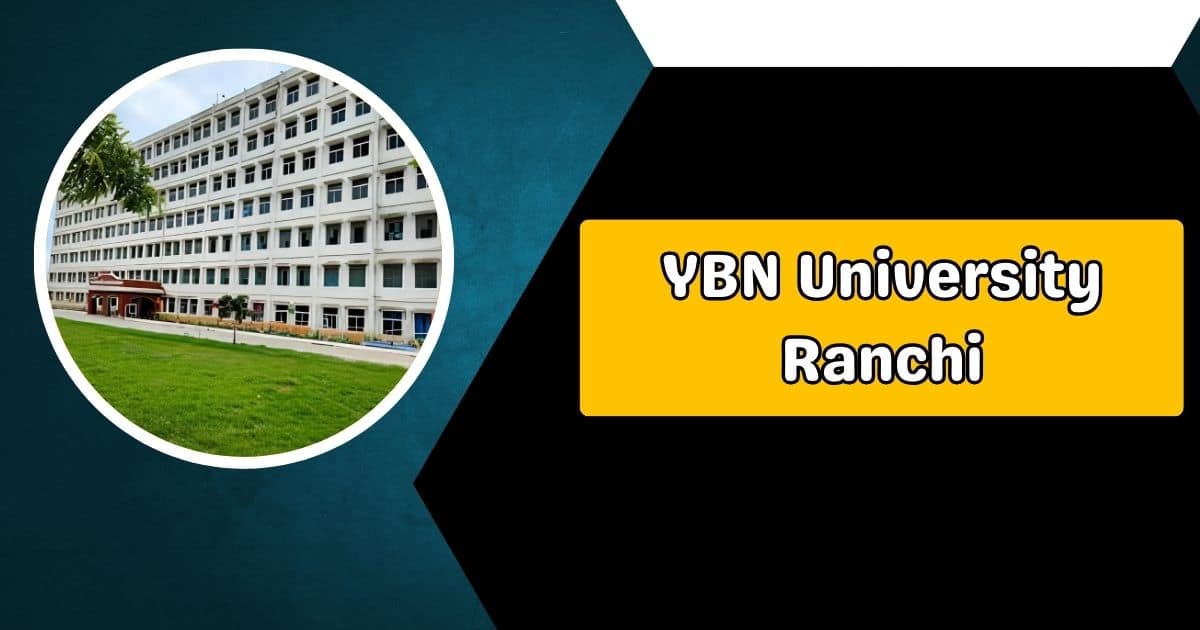

28 thoughts on “CLAT Exam 2026- Registration, Fees, Eligibility, Exam Pattern & Syllabus, Top Colleges”